A GUIDE TO WHICH CAMPING GEAR DESERVES YOUR HARD-EARNED CASH, AND WHICH GEAR TO SKIMP ON
Going out into the woods, lying on the ground, eating glorified, rehydrated wood chips (this isn’t always the case – shout out to all the tasty backpacking food brands out there!): How expensive could such a hobby be?
Well, because you’re a reader of this publication, I’ll bet you already know the answer to that question. The answer is, “somewhat expensive,” which can be perplexing, considering that we outdoors people elect to trade our homey, creature comforts for experiences that at times tend to be more “creature” than “comfort.”
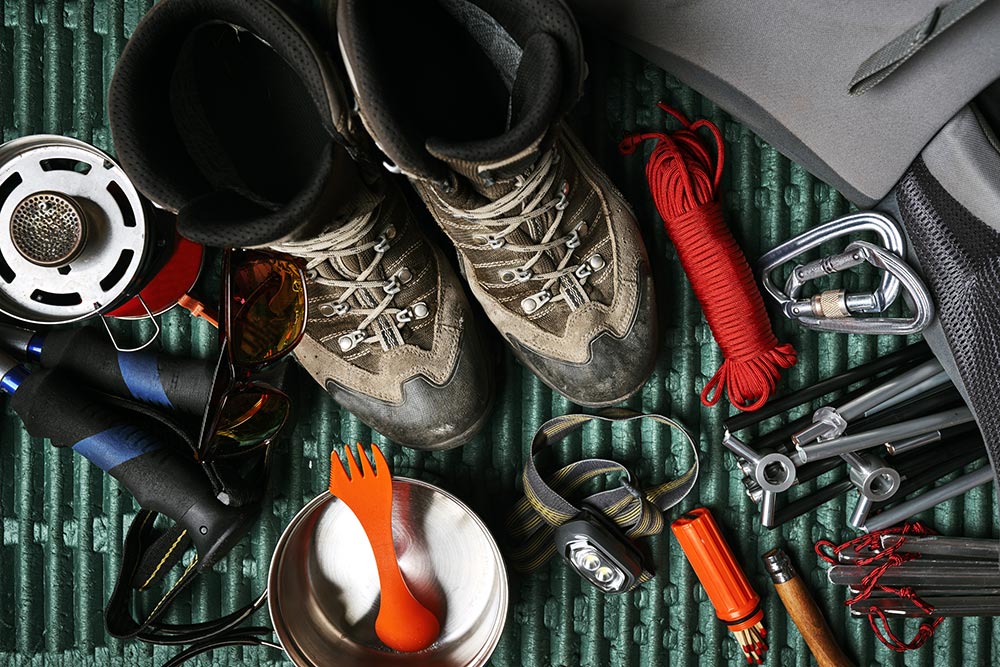
However, if you scrutinize the purpose of every item in your camping inventory, you can discern what really needs to be premium and what can be sourced from a garage sale or from online marketplaces. We’re here to help you make those judgment calls. Read on to discover on which items you can safely pinch some pennies, and on which you’d better splurge.
SHELTER
You may have heard of the “Big Three” in camping circles. The shelter, or tent, would fall into this category, along with sleeping bag and backpack. The Big Three are your main concerns when spending time in the wilderness. Therefore, these will be your biggest expenses.
The tent is a splurge item because, as of today, lighter weight or ultralight gear will usually cost more. This is because lightweight yet durable materials like Dyneema, which is a “super-plastic” fiber that is 15 times stronger than steel at the same weight, naturally cost more than heavy-duty stuff like canvas or poly-cotton fabrics.
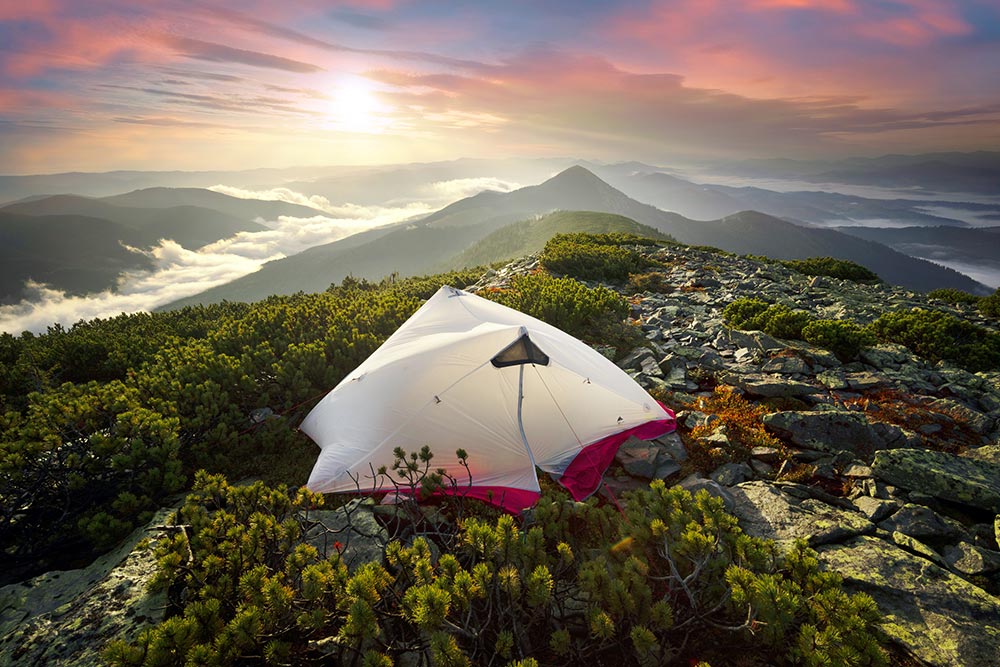
How much you splurge on a tent will come down to your camping style. Are you a car camper, a multi-day camper or a thru-hiker? How much does weight and the number of people your tent can accommodate matter to you? As backward as it might seem, the smaller/less or lighter material your tent is made of, the more it will typically cost. Splurge on the lightest and most durable shelter that you can find to suit your needs, like those from Zpacks or Gossamer Gear.
SLEEPING PAD
Less important than a sleeping bag but important nonetheless, your sleeping pad might seem like it belongs on the splurge side of things, since you’ve no doubt seen the price tags for some of the higher-end inflatable pads. For a good-quality pad, you can wind up paying $100-300, which will cause some to balk and others to nod their heads agreeably. After all, this is the item that ensures a good night’s sleep on the cold, hard ground, right?
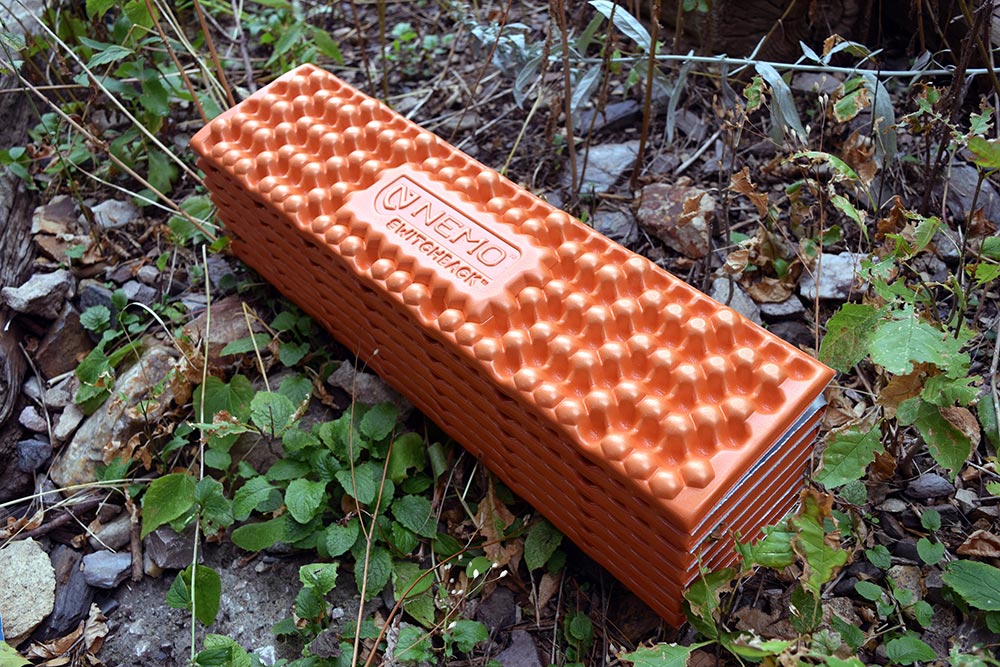
The decision to put the sleeping pad on the save list versus the splurge is a personal one. After years of splurging on fancy pads, only to suffer the same outcome with every one, regardless of the rave reviews or guarantees of durability, I have decided that the best way to move forward is to forsake inflatable air pads altogether. It’s only a matter of time before they get a hole, and in my experience, the holes aren’t very patchable. This can really suck for a thru-hike, as you can imagine.
The level of comfort a person needs is highly personal; I am happy sleeping on hard ground as long as there isn’t one pesky rock digging into my hip and the heat isn’t entirely sucked from my body. Some people need a lot of cushion. But if you can handle a bulkier but still lightweight sleeping pad, save your money and opt for a closed-cell foam pad instead of an air pad.
SLEEPING BAG
This guy is as important as your shelter. Regardless of whether you car camp or backpack, you will need to shell out some dough for the right sleeping bag materials and temperature rating. And you will probably want to buy this item new or as new as possible rather than “previously loved.” Some of the reasons for this, you can probably imagine. Others, I will cover.
Like with those used in tents or backpacks, premium, lighter materials will cost you more. Goose or duck down will cost more than synthetic, and unless you have an ethical or allergy-related reason to shun those, opt for down over synthetic. The warmer and more water resistant your sleeping bag or quilt is, the more it will cost you, but you can rest easy knowing your purchase will last much longer than the cheaper alternatives.
“If that sleeping bag’s former owner brought urushiol … into that sleeping bag … have fun with that new rash you’ll probably get.”
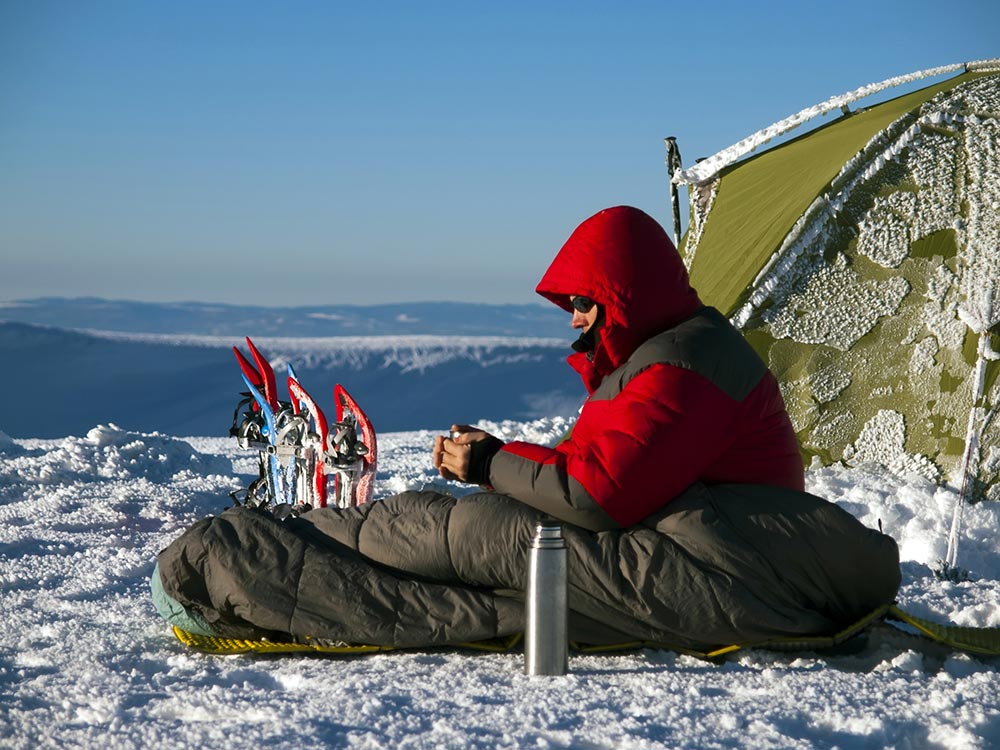
One reason to buy new rather than used is because you never know what went on in that sleeping bag. I don’t care how much you trust Jeff from Craigslist; you have no guarantee of the condition of the item, and no recourse if you discover something to your dismay after the transaction is complete.
And I’m not talking about just the obvious gross things; I’m talking about poison ivy. If that sleeping bag’s former owner brought urushiol, the oily compound in poison ivy that makes it so devastating, into that sleeping bag and didn’t manage to totally wash it out, have fun with that new rash you’ll probably get. I am speaking from experience.
COOK SET
Skimping on your cook set makes sense because the outdoor-gear industry is always coming out with the latest and greatest new materials and configurations for camp cookware. Companies are always going to dream up a cleverer way to collapse cups and utensils, and ways to stuff them into themselves. The nice thing is, each time these companies reinvent the wheel, you have a chance to nab the only-slightly-less-clever iteration that came before.
“…Each time these companies reinvent the wheel, you have a chance to nab the only-slightly-less-clever iteration that came before.”
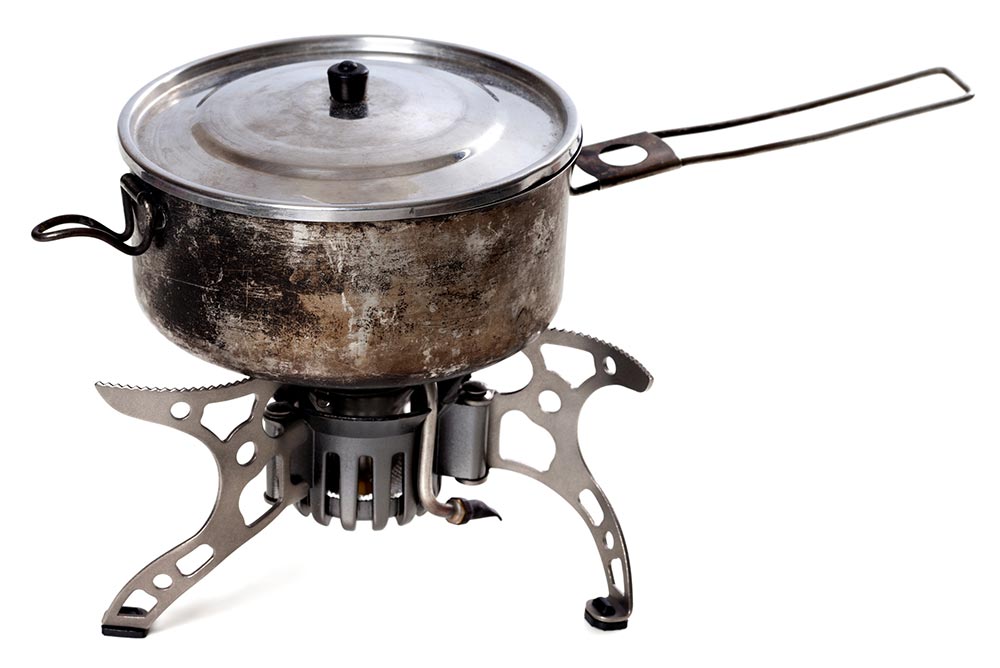
If cookware is on your purchase list, start hitting thrift stores and combing online marketplaces like your local Facebook Marketplace. Oftentimes, you can find cookware that was all the rage five or 10 years ago for a fraction of the price of what you’ll pay for a mildly cooler, today-version.
BACKPACK
A backpack could arguably go into either the splurge or save category, and I’ll explain why. You want to splurge on the quality of the final member of the Big Three, but it doesn’t necessarily have to be new. Like with the others, you want your backpack to be as light and durable as possible, and that will cost you. But if you have your heart set on a specific model, keep your eyes peeled for online deals and local marketplace listings.
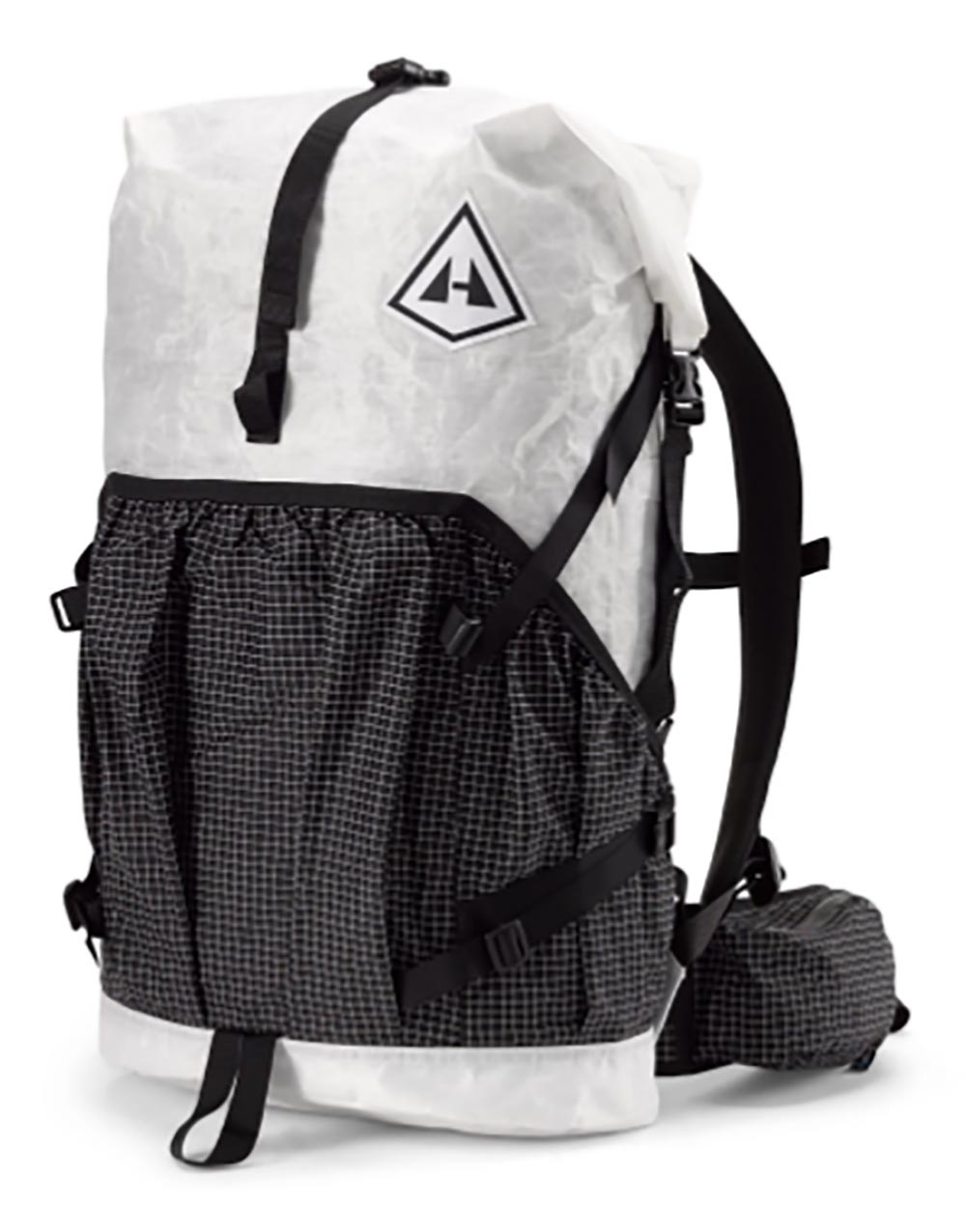
Hyperlite Mountain Gear photo
Once again, your camping style will dictate which sort of pack is right for you. Ultralight hikers will want something smaller and lighter than car campers, but honestly, the prices are similar despite major differences in weight. For example, you can shave off a couple pounds (which adds up on long treks) by choosing a backpack from cottage companies like Gossamer Gear or Hyperlite Mountain Gear instead of one from Osprey (sorry, Osprey) without sacrificing much in comfort – and the prices will be surprisingly comparable.
Definitely choose the lightest, most durable, most water-resistant product, but before you splurge on it new, make sure there isn’t a used one out there in good condition.
RAINGEAR
No need for the bells or whistles here. Is it packable? Does it keep you dry? The cool thing about raingear is that even the cheapest stuff usually can handle these asks. If you don’t need the extra warmth or coverage that sleeves provide, you can get away with a vinyl poncho for under $20. If you do need extra coverage (*raises hand*), you can still find affordable raingear pretty easily, either on sale, used online or in your local outdoors/farming supply store. You don’t need a frou-frou color or sexy fit for this purchase. If it keeps you dry, it’s serving its purpose.
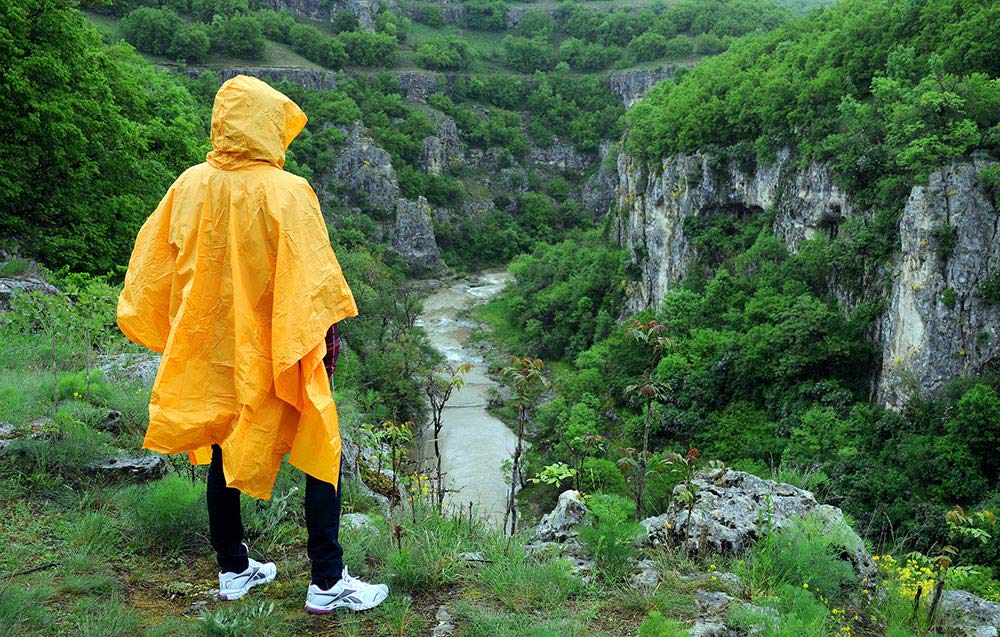
Vicspacewalker / Dreamstime.com photo
HYDRATION SYSTEM
Two reasons to splurge here. One, the quality-price ratio is significant. There is some great technology out there for water treatment and hydration reservoirs. You can get easier, more convenient and safer hydration systems (and when I say that, I am talking about the means of both treating your water afield and carrying it) now more than ever before. You can have quick-and-dirty water purification tablets on hand, but companies such as LifeStraw, MSR, Grayl, Katadyn and Platypus all have some lightweight, durable and trustworthy hydration gear out there that is worth the price tag.
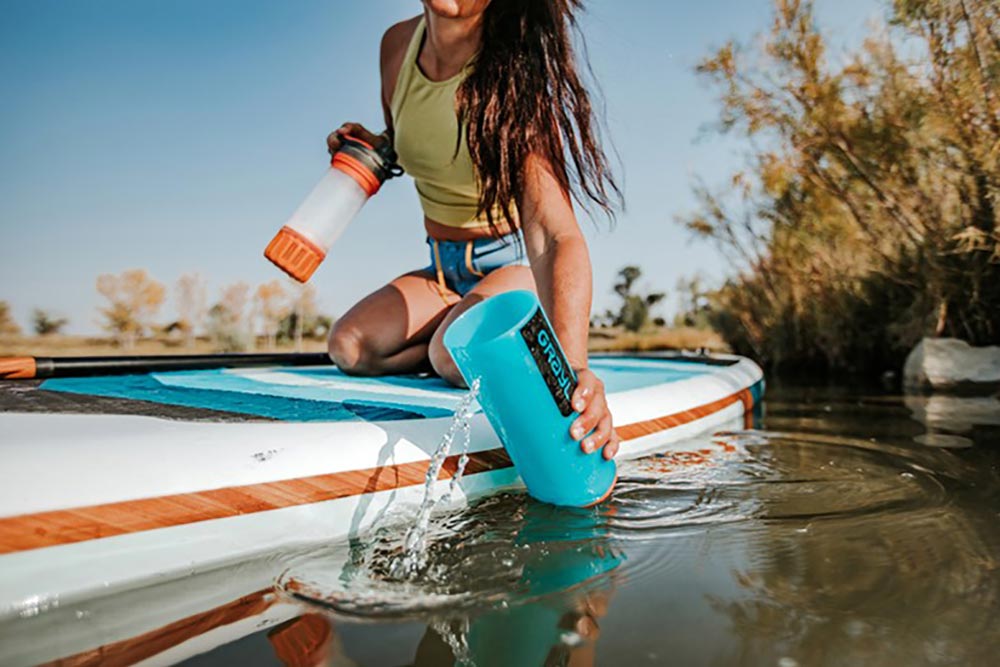
Grayl photo
Safe drinking water and a convenient means to carry it is a priority. Take advantage of the cool tech we have access to nowadays and don’t take a chance with used or cumbersome gear.
APPAREL
Thrift, thrift, thrift. There are myriad avenues by which you can find bargains on hiking apparel. Of course you can treat yourself to something new and snazzy every once in a while, and I’m not telling you to exclude from your Christmas list that irresistible insulated hoodie in Velvet Sand from Arc’teryx. But first hitting secondhand stores, eBay and Etsy in search of camping wardrobe digs is a must. If you can’t find the items you’re looking for within a reasonable timeframe, peruse online sales next. And if used is not your thing, mark up your calendar with all the end-of-season sales your favorite retailers host.
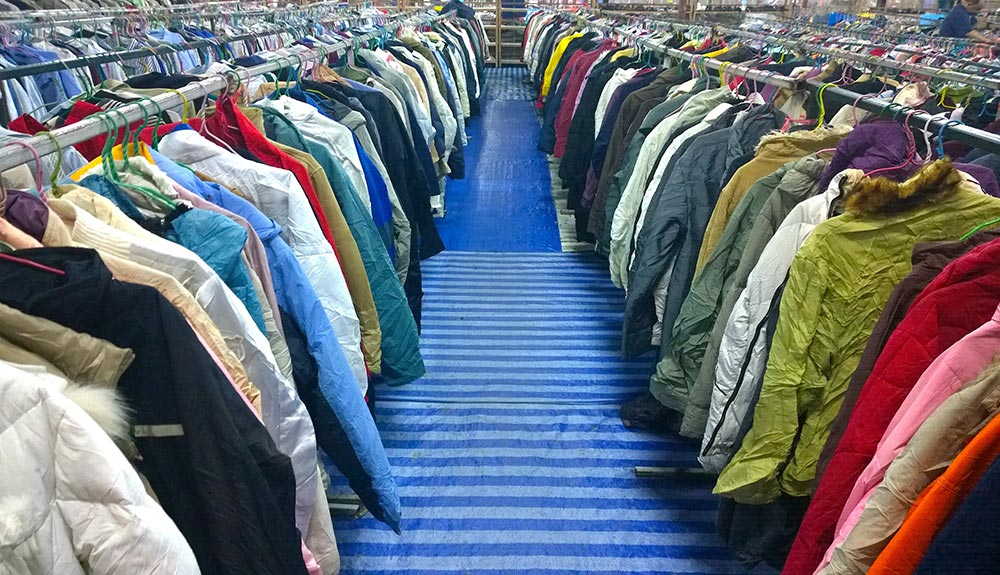
Jaturun Phuengphuttharak / Dreamstime.com photo
FOOTWEAR
Save on clothing for your body but splurge on the feet? Yup. You can always add layers of clothing if alone it’s not up to snuff, but chances are, you only have one or two pairs of shoes to carry you there and back again. You want something reliable and comfortable, and too often, you can’t count on these attributes in dealing with used hiking shoes. The more you wear them, the more they will conform to your feet, so it’s better to start fresh than to deal with the shape formed by someone else’s hoofs.
Shoes – be they barefoot-style or heavy-duty – are an investment. Do your research to save yourself unnecessary heartache, but expect to spend more to get high-enough quality.
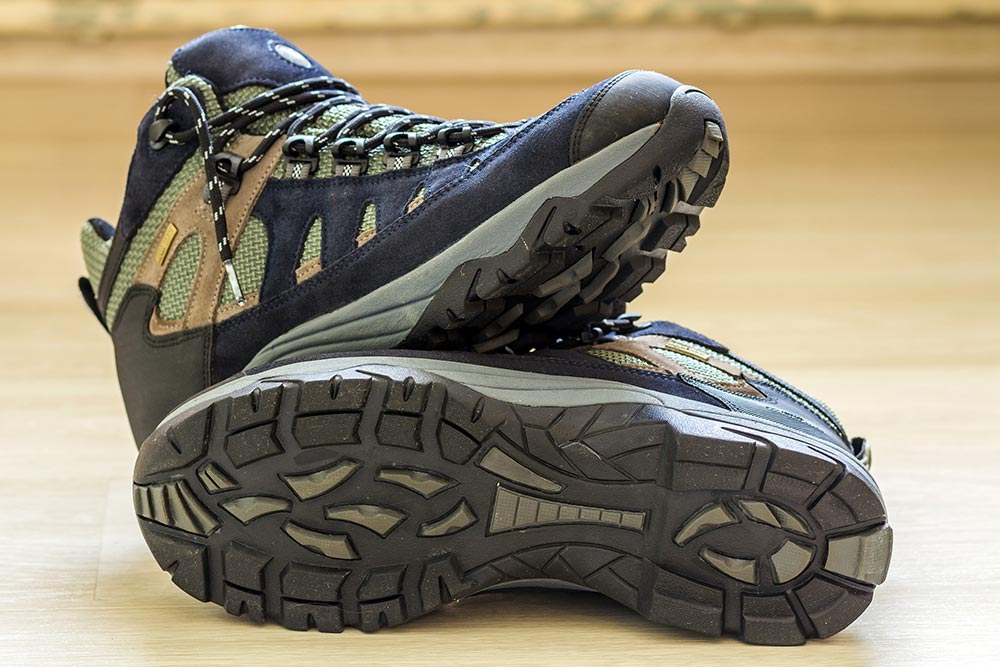
Andrii Biletskyi photo
FOOD STORAGE
This one is so easy: Forget those bulletproof, Spectra-fabric bear bags and learn how to properly hang a food bag to keep it out of critters’ reach. Choose a waterproof dry/stuff sack with material tough enough to support the weight of your food and toiletries, a reliable carabiner and a strong rope, and find thyself a suitable branch and a twig. There is definitely a learning curve to hanging your food properly, but once you can do it, you don’t need to worry about replacing this gear any time soon.
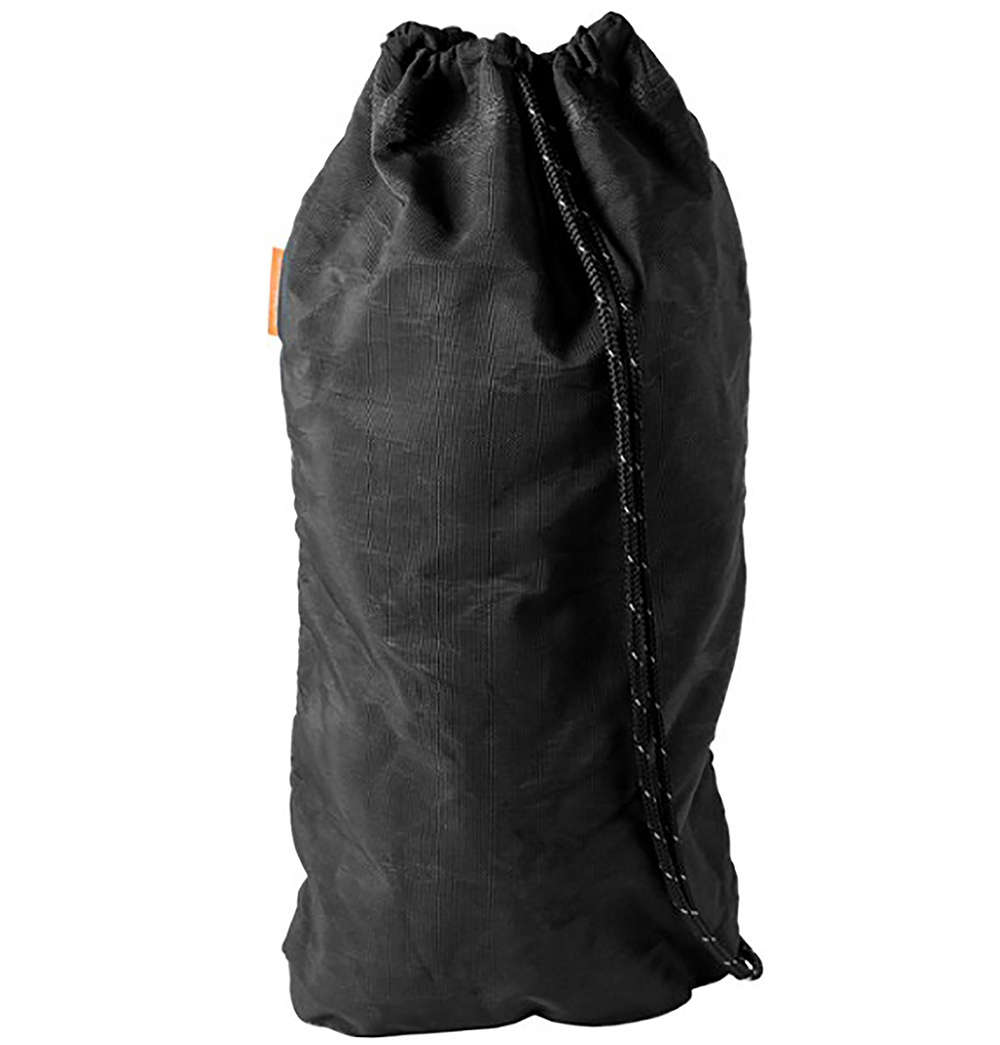
Ursack photo
KNIFE AND GADGETS
Garage sales and pawn shops are rife with perfectly acceptable knives and other camping gadgets like multitools, hatchets, compasses and more. If it has an edge, it can mostly likely be sharpened. A little dirt or wear-and-tear adds character to hard goods like these. As long as the integrity of the blade or mechanical action is intact or can be tuned, and you like the feel of it in your hand, go for used.
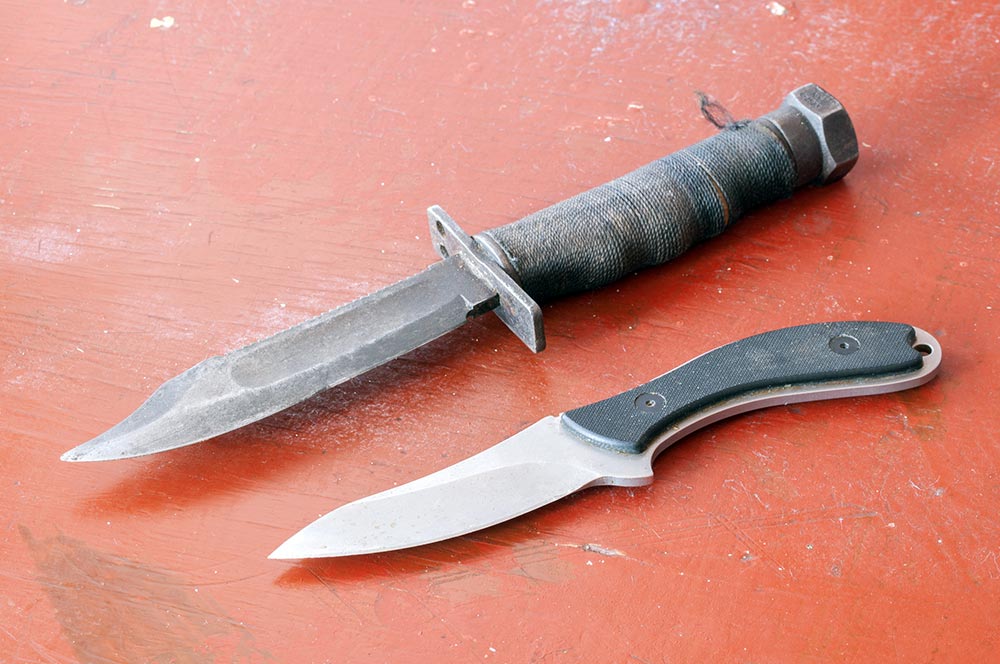
Czuber / Dreamstime.com photo
SPLURGE OR SAVE ON A CAMP STOVE?
Whether you decide to splurge or save on a portable camp stove is a coin toss. Some campers swear by their Jetboil stove or the latest from MSR (myself included), and some do away with the setup altogether, opting for a homemade hobo or alcohol stove.
If you don’t mind having to tote fuel canisters and the unfortunate waste that goes along with them, splurging on an ultralight, reliable stove might be your preference. Going this route, you can usually cook more easily and for longer than you can with alcohol stoves. However, alcohol stoves are the lightest to carry and waste less fuel, and can be more packable and environmentally friendly. And did I mention cheap? Where you’ll spend $80-120 on a commercial stove, you’ll spend as low as $3 on a homemade version.
My suggestion? If you have the time and wherewithal, make an alcohol stove yourself and try it out a few times in the field. If it suits your needs, you’re golden. If not, maybe it’s time to give that pretty little PocketRocket another peek.
SOURCES
Gossamer Gear
www.GossamerGear.com
Zpacks
www.Zpacks.com
Hyperlite Mountain Gear
www.HyperliteMountainGear.com
LifeStraw
www.LifeStraw.com
Grayl
www.Grayl.com
Katadyn
www.KatadynGroup.com
Platypus
www.Platy.com
MSR
www.MSRGear.com
Jetboil
www.Jetboil.com

